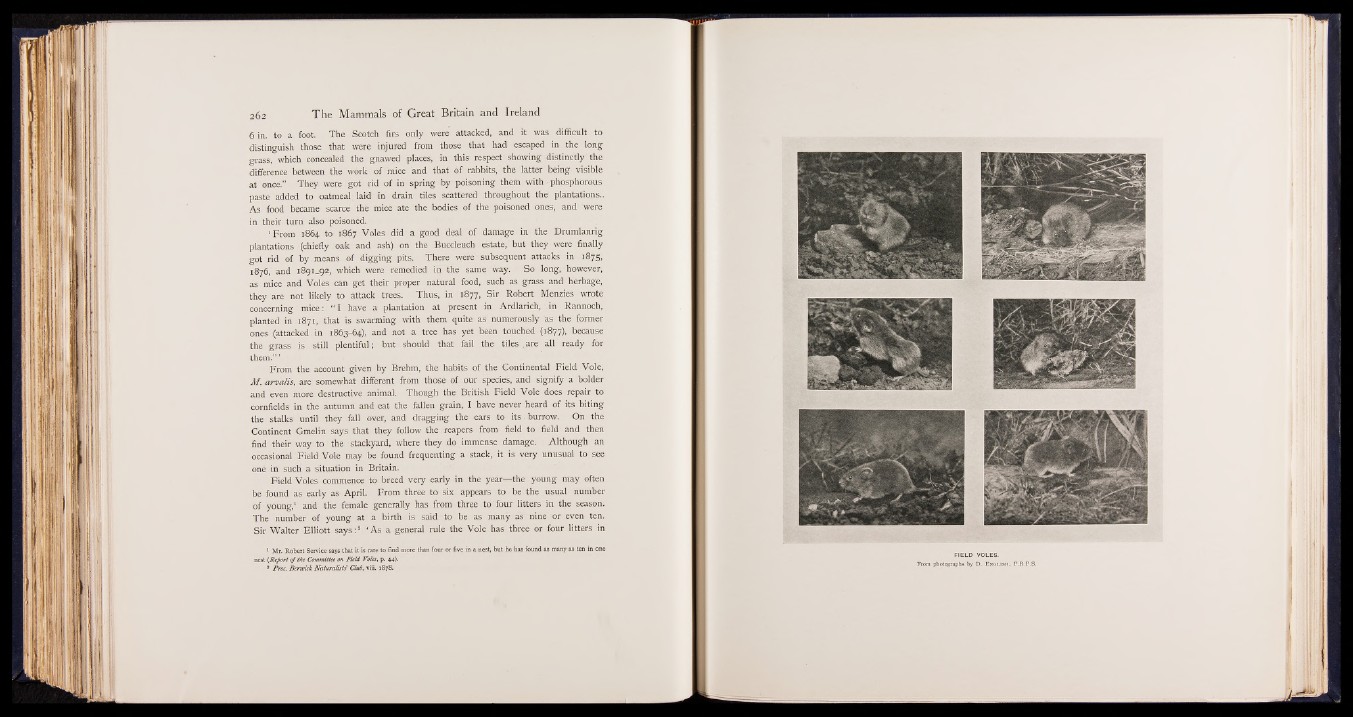
6 in. to a foot. The Scotch firs,Tjonly were attacked, and it was difficult to
distinguish those that were injured from those that had escaped in the long
grass, which concealed the gnawed places, in this respect showing distinctly'tlje
difference between the'*brk of "mice 'and that of rabbits, the latter being, visible,
at once.” They were , got rid of in spring by poisoning them with • phosphorous
paste added to oatmeal ■ laid in drain tiles; scattered throughout the plantations,.
As food became scarce'the mice ate the bodies of • the poisoned ones, Arid were
in their turn also poisoned.
‘ From 1864 -to 1867 Volfe. did a good deal p ff damage in the Drumlanrig
plantations (chiefly oak and ?,ash), on the Buccleuch estate,t|ut -they: were finally
got rid of by . means of digging pits: There were subsequent attacks in 1875,
1876, and 1891^92, which,were remedied in the same way. S o , long, however,
as mice and Voles can get their proper natural food, such as grass and herbage,
they are not likely to attack trees. Thd^j in 1877,, . Sir Robert Menzies wrote
concerning mice : “ I Chave. a 'plantation at present in Ardlarich, in Rannoch,
planted in 1871, that is swarming with theni quite as numerous%‘as the fofiner
ones '(attacked, in 1863-64), and not a tree has y6t been touched. (1877), because
the grass in s t i l l plentiful; but iAould that fail the tiles „are all ready for
them." ’
From the account given by Brehm, the habit§gj>f the Continental Field Vole,
M. a rva lis, are somewhat different from those of our species, and. signifya^bblder
and even more destructive animal. Though the British Field3 Vole does repair to
cornfields in the autumn and eat the fallen grain, 1 have never heard of its biting
the stalks until they fall, over, and dragging the cars to its.burrow. On the
Continent Gmelin says that they follow the reapers from field to field: and then
find their way to the stackyard, where they dec immense damage. Although an
occasional Field Vole may be found frequenting a stack, it is very unusual to' see
one in such a situation in Britain.
Field Voles’:commence to; breed very early ; i i the year—the .young may. often
be found as early as April. From three to six appears to-be the usual number
of young,1: and the female generally has from three to four litters in the season.
The number of young at a birth is said to be as many a s 1 nine, or even ten.
Sir Walter Elliott s ay s f:v ‘ As a general rule the Vole has thtee or four litters in
1 Mr. Robert Service says that it is rare to find more than four or five in a nest, but he has found as many as ten in one
nest (Report o f the Committee on F ield Voles, p. 44).
* Proc. Berwick N aturalistd Club, viii. 1878.